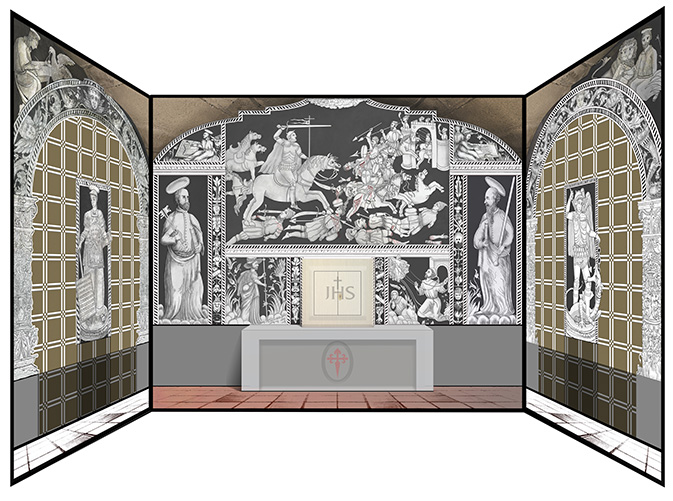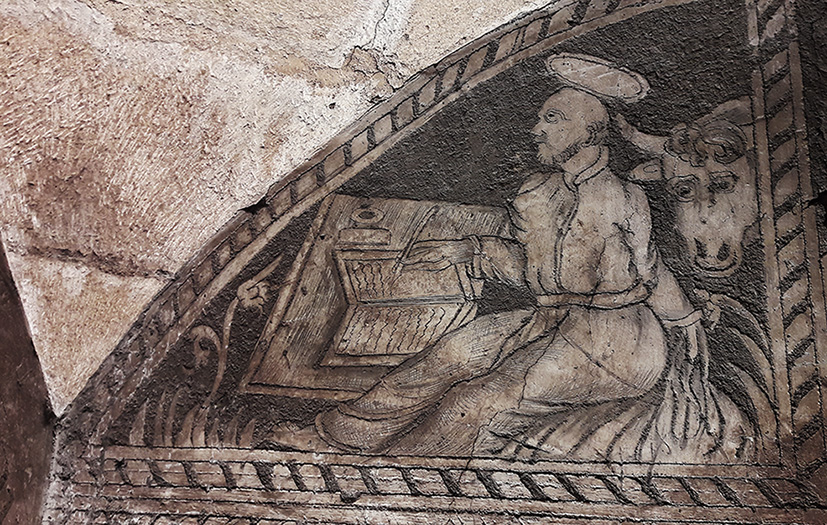16th century
Probably the only sgrafitto reredos in the world, this masterpiece of the Renaissance art, hidden behind its wooden Baroque successor, is the most important piece of art in the temple and, even more, in the whole district. It is also one of the best examples of Renaissance sgrafitto in Spain.


Whereas figurative sgrafitto in Spain used to be applied only for small gaps and friezes, this unique altarpiece spreads over the walls of the apse and even along part of the walls outside, which is extraordinary, as it is also the unusual quality of its figures for a technique which, in Castile, could only be carried out by masons, not artists.

The whole set revolves around a huge scene of “St James in the Battle of Clavijo”, the biggest sgrafitto scene in the Spanish Renaissance. Another remarkable quality is that this work is one of the few sgrafitto instances you could find in Spain at that time using a 3D technique, scratching the white layer in different ways so as to create different shades of grey to successfully represent volume. The technique goes away from the usual Spanish 2D look and mirrors the one used in Tuscany, Italy.

The fact that it has been hidden behind wood for centuries accounts for its remarkable preservation. And to top it all, experts just concluded that these Renaissance sgraffiti are the oldest in Spain, which makes them even more interesting and raises questions that need to be answer.
For all this we proudly say that this church can claim to be the Sistine Chapel of the Renaissance figurative sgrafitto in Spain.

Location:
Escrito por Angel Castaño


